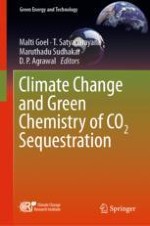2021 | OriginalPaper | Chapter
CO2 Sequestration Through Phytoremediation Techniques with Special Emphasis on Urban Forestry to Mitigate Climate Change Impact
Authors : M. Govindaraju, J. Fowmitha Banu, S. Senthamil selvi, Malti Goel
Published in: Climate Change and Green Chemistry of CO2 Sequestration
Publisher: Springer Singapore
Activate our intelligent search to find suitable subject content or patents.
Select sections of text to find matching patents with Artificial Intelligence. powered by
Select sections of text to find additional relevant content using AI-assisted search. powered by
